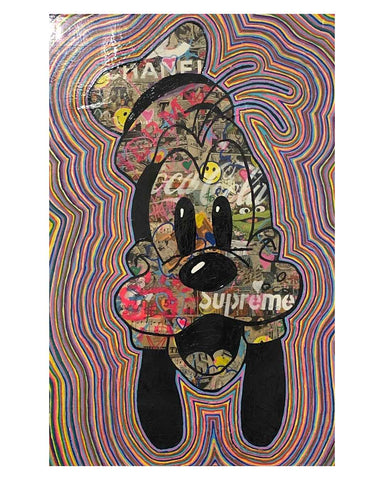What is fan art? It is a bright monument to the passion and ingenuity of enthusiasts worldwide throughout the enormous terrain of creativity. When discrepancies with the original canon appear, fan-created worlds typically result by combining, remixing, or mashing up famous sources already in existence. This allows them to purposefully criticise rather than display incoherence. Fan-made worlds do exist, but they are usually not wholly original; instead, they are produced by overlapping, combining, or mashing together existent sources. Rather from just being a case of incoherence, inconsistencies inside these fan-created worlds frequently function as intentional commentary. These worlds are not the exclusive product of lone writers; rather, a large number of fans collaborate to create them. Though such models—such as volunteer-run, open-source literary worlds—may arise, they are uncommon because of the substantial public investment they demand. Fundamentally, fan art is any type of artwork produced by enthusiasts for a specific media or pop cultural phenomenon.
Defining Fan Art
Fan art is an effective means of encouraging a feeling of camaraderie and acceptance among enthusiasts. Marshall McLuhan emphasised the significant impact of media on societies in 1967, arguing that communication mediums had a greater influence on social and cultural shifts than content. This idea is best exemplified by fandom, which is a group of people who devote a lot of time and money to discussing and interacting with creative or literary works together. Although there are several definitions of fandom, for legal and commercial purposes, a wide definition is sufficient. These classifications, however, frequently ignore the complex interaction that exists between the literary work and the community. Scholars such as Henry Jenkins contend that fans actively participate in forming and disseminating textual meanings, so asserting control over texts generated in large quantities. Although this viewpoint acknowledges the agency of the fans, it ignores the mutually beneficial and occasionally difficult interaction that has existed throughout literary history between authors and readers. It's important to dispel the myth that fandom corresponds to fanaticism, even though it's frequently perceived as an extreme type of audience engagement. Rather, there is a symbiotic yet tense interaction between creators and fans. While consumers rely on creators to create and share content, producers rely on their fan base to consume their work. The bond between creators and fans is maintained by this mutual dependence, which creates a self-reinforcing loop.
Japanese Fan Art
The phrase "Yama nashi, Ochi nashi, Imi nashi" (which translates to "No Climax, No Resolution, No Meaning") is the source of the Japanese term "Yaoi." It was first used in the early 1980s by amateur Manga artists to characterise short works with poor storytelling skills in the manga fan community. Its definition changed over time to include artworks that highlight love interactions between men. Depending on the situation or the viewpoint of the researcher, the definition of Yaoi can change. Yaoi is a general term for any artistic works, mostly manga and books, that show male/male love stories written by and for women. It relates more specifically to fan art with these kinds of themes. Fan art is any activity or creation that uses characters or locations from other fans' own works.
Yaoi fan artists
Yaoi fan artists are driven by more than just canon critique. Rather, what matters most to them is how attached they are to male characters and their interactions. Character connections change as a result of this bond, which inspires fan art. Dissatisfaction with the original wording is one of the reasons for this attachment. In order to realise their ideal story, artists such as Yayoi Takeda exhibit ambiguity towards their attachment and discontent, which leads them to create Yaoi fan art. Yaoi fan art, in contrast to the original text, attempts to portray idealised interactions between male characters, frequently turning friendships into romantic partnerships. Some critics believe Yaoi fan art is too bizarre for critical examination since it deviates too much from the original material in terms of storyline, setting, and drawing technique. Nonetheless, Yaoi fan art is unrestricted by canon and provides opportunities to reimagine male character relationships in order to explore alternate narratives and interpretations.
Please get in contact regarding more information about my artwork.



